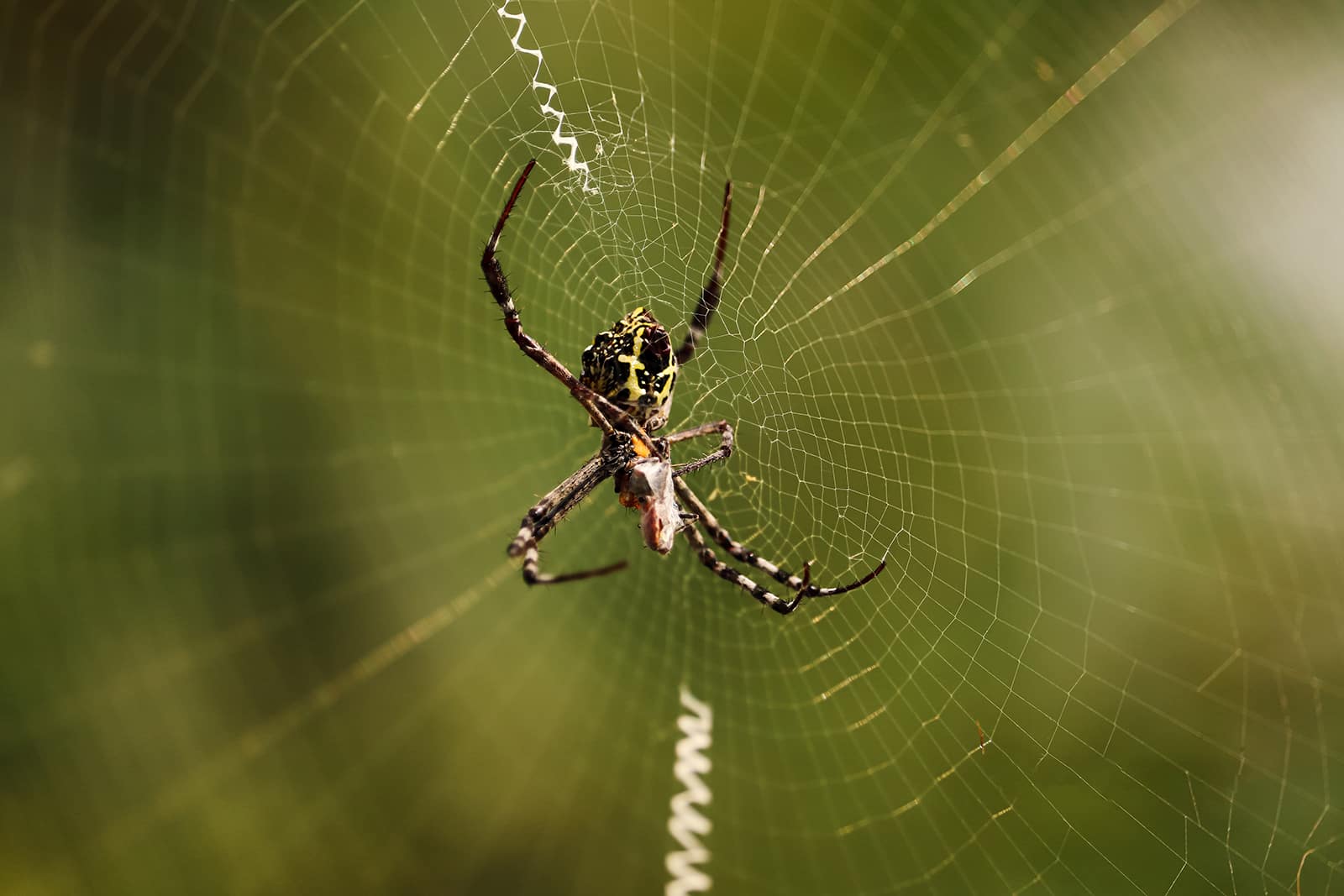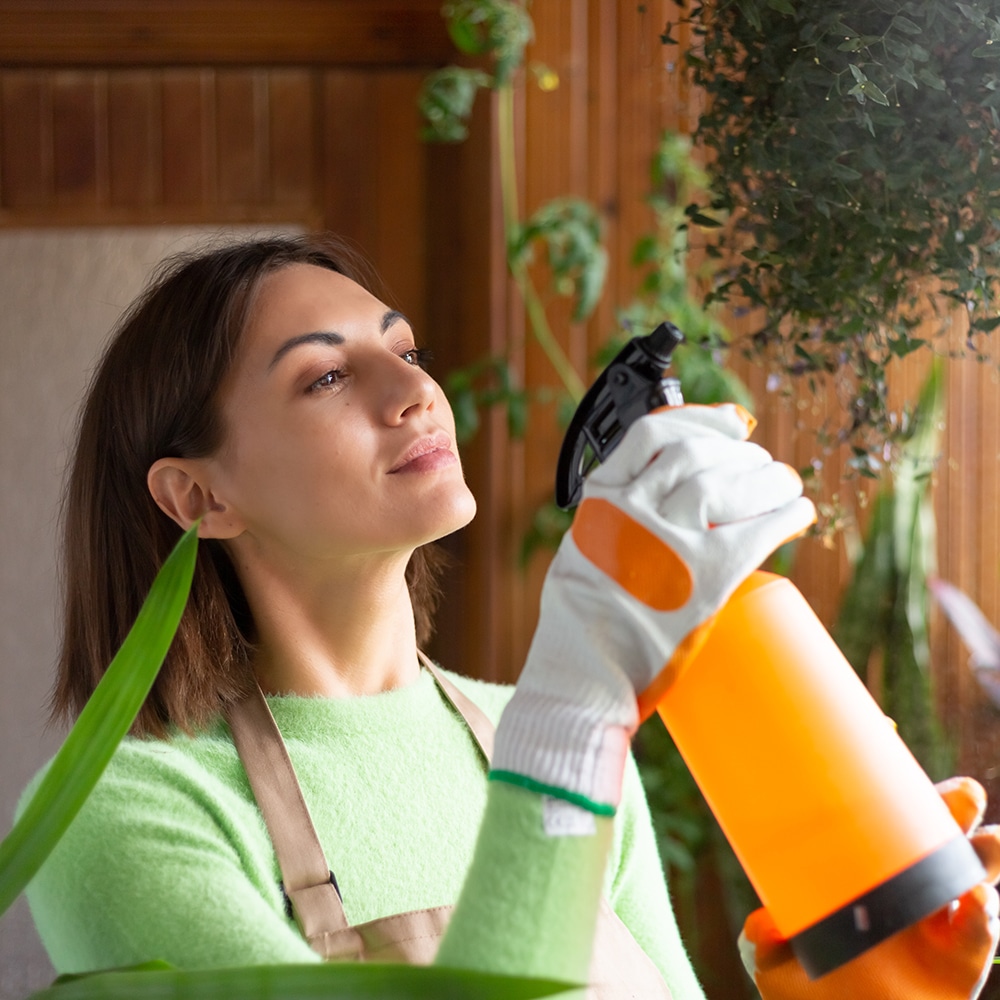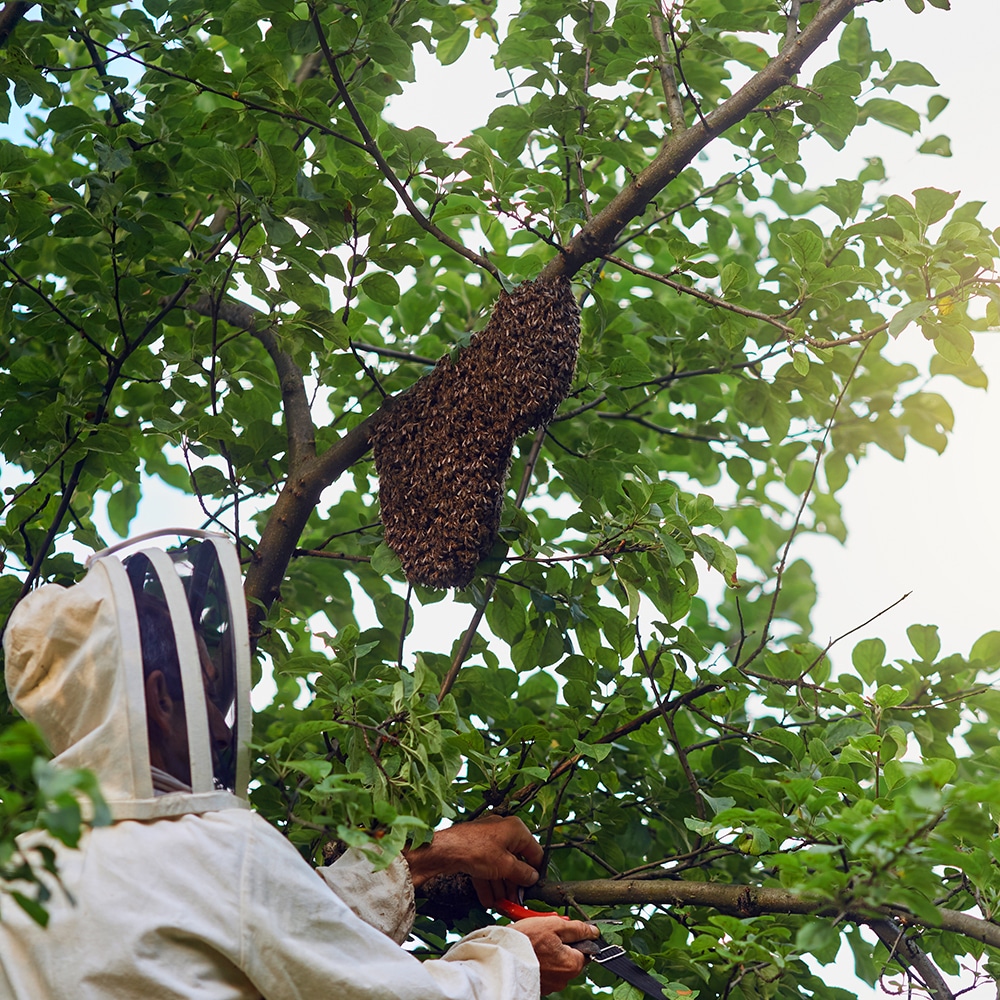
Why Do Spiders Come Back And Why
Why Do Spiders Come Back And Why On The Central Coast NSW. Responsive Proactive Solutions. Detail-focused for lasting results. Call Adam on 0431 222 894
Explore the world of “Homemade Pest Remedies and Repellents” with Vital Pest Control. Discover natural solutions for a pest-free home on the Central Coast NSW. For more insights, visit Vital Pest Control.
Essential oils for indoor use
Essential oils are a great way to deter pests. Use lavender or eucalyptus to repel insects indoors. They smell pleasant and are safe when used correctly. A few drops in a diffuser can create a pest-free environment.
Vinegar solutions for ants
Vinegar is a versatile remedy for ants. Mix equal parts vinegar and water. Spray directly on ant trails to disrupt their scent paths. This solution is effective and easy to make at home.
Baking soda for roaches
Baking soda offers a simple solution for cockroaches. Combine it with sugar to attract these pests. The mixture can disrupt their digestive systems, leading to effective control.
Diatomaceous earth for crawling bugs
Diatomaceous earth is a natural substance that works well against crawling bugs. Sprinkle it in areas where pests frequent. Its abrasive properties can kill insects without chemicals.
Clove or peppermint sprays
Clove and peppermint oils make effective sprays. They repel many insects and leave your home smelling fresh. Mix a few drops with water, then spray in problem areas.
Balancing odor vs efficacy
Balancing pleasant smells with pest control efficacy is crucial. Some remedies might be strong-scented. Choose solutions that are both effective and bearable for everyday use.
Keeping children away from mixtures
Safety first. Store homemade mixtures out of reach of children. Label containers clearly to avoid accidental ingestion. Always supervise children around these solutions.
Testing a small area first
Always test remedies on a small area first. This helps ensure no adverse reactions occur. It’s a simple step to protect surfaces and materials in your home.
Discover how we can help you today! Visit our Contact page for more information.

Essential oils offer a natural solution for pest control, making them an ideal choice for residents of Central Coast NSW seeking homemade remedies. These oils not only help keep pests at bay but also add a pleasant aroma to your home environment.
Lavender Oil for Moth Repellence
Lavender oil is known for its calming scent, but it also works wonders against moths. Moths dislike the fragrance, which makes lavender oil a great option for keeping them out of closets and wardrobes. Simply add a few drops to cotton balls and place them in areas prone to moth infestations.
Peppermint Oil to Deter Ants
Peppermint oil is a powerful deterrent for ants, thanks to its strong scent. Ants rely on scent trails to navigate, and peppermint oil disrupts these trails. Mix it with water in a spray bottle and spritz around windows, doors, and other entry points to keep ants at bay.
Eucalyptus Oil Against Dust Mites
Eucalyptus oil is effective in combating dust mites, common in many homes. Its strong aroma can eliminate these tiny pests, especially in bedding areas. Add a few drops to your laundry detergent to ensure your sheets and pillowcases are dust mite-free.
Dealing with ants can be a pesky issue, especially on the Central Coast of NSW. Fortunately, vinegar offers a natural, effective solution. Not only is it affordable, but it also avoids harsh chemicals that can harm your home environment. Using vinegar solutions can deter ants and keep your spaces clean and fresh.
Why Vinegar Works
Vinegar disrupts the pheromone trails ants use to navigate. The strong scent confuses them, making it difficult to find food sources. This disruption can help break the cycle of ant invasions in your home or garden, providing a simple yet powerful repellent.
Creating a Vinegar Solution
To make an effective solution, mix equal parts vinegar and water in a spray bottle. This blend is strong enough to deter ants but safe for most surfaces in your home. Ensure you use white vinegar, as it has the most potent odour to repel ants.
Application Tips
Spray the vinegar solution along entry points like windowsills, doorways, and any visible ant trails. Regular application, especially during the warmer months, can help maintain the barrier. Reapply after cleaning or heavy rain to ensure effectiveness.
Benefits Beyond Ant Control
Besides repelling ants, vinegar solutions can clean surfaces naturally. It acts as a disinfectant, removing bacteria and odours. By using vinegar, you not only solve your ant problem but also contribute to a healthier home environment.
Baking soda offers an easy, cost-effective solution for those battling roaches on the Central Coast of NSW. It’s a simple remedy you can make using items you probably already have. This method disrupts the digestive system of roaches, making it an easy and natural pest control option.
Why Baking Soda Works
Roaches cannot digest baking soda. When ingested, it reacts with the acids in their stomach, creating gas and causing them to burst. This natural process effectively decreases roach numbers without harmful chemicals, making it a safe choice for households with children or pets.
How to Prepare the Mix
To create an effective roach bait, combine equal parts of baking soda and sugar. The sugar attracts the roaches, while the baking soda does its work. Place this mix in shallow dishes or sprinkle it in areas where you notice roach activity. Common spots include under sinks, behind appliances, and in dark corners.
Maintenance and Monitoring
Consistent application is key to successfully managing roaches with baking soda. Check bait stations regularly, replacing them when the mixture appears low or contaminated. Monitoring the situation helps in assessing the effectiveness and adjusting your approach if necessary. This method not only manages current infestations but also helps in preventing future problems.
Diatomaceous earth is a natural pest control remedy gaining popularity on the Central Coast of NSW. This fine powder, made from fossilised aquatic organisms, is an effective solution for tackling crawling bugs. Homeowners seeking eco-friendly pest control options often turn to this versatile substance.
How Diatomaceous Earth Works
The effectiveness of diatomaceous earth lies in its microscopic sharp edges. When crawling bugs come into contact with the powder, these edges pierce their exoskeletons, causing them to dehydrate and perish. This method is non-toxic to humans and pets, making it a safe choice for homes with children or animals.
Applying Diatomaceous Earth
To maximise its effectiveness, apply diatomaceous earth in thin layers along areas where bugs frequent, such as skirting boards, under appliances, and near entry points. A little goes a long way, so ensure the powder is spread evenly without clumping. Reapply after heavy cleaning or if the powder becomes damp, as moisture reduces its efficacy.
Benefits for Central Coast Residents
Using diatomaceous earth provides Central Coast residents with a cost-effective, sustainable pest solution. Unlike chemical pesticides, it does not contribute to environmental damage or health risks. Its long-lasting nature ensures ongoing protection against crawling pests, offering peace of mind to those in pest-prone areas.
On the Central Coast of NSW, managing pests can be a persistent challenge, but natural solutions like clove and peppermint sprays offer effective alternatives. These homemade remedies are not only eco-friendly but also safe for households with pets and children. With a focus on essential oils, these sprays can help keep your home pest-free naturally.
Clove Spray: A Potent Ant Repellent
Clove oil, derived from the clove plant, acts as a strong deterrent for ants. By disrupting their scent trails, clove oil prevents ants from entering your home. To create a clove spray, mix a few drops of clove oil with water in a spray bottle. Spraying around entry points like door frames and window sills can keep ants at bay. The pungent aroma of clove is unpleasant to ants, ensuring they steer clear of treated areas.
Peppermint Spray: A Versatile Insect Deterrent
Peppermint oil is renowned for its ability to repel a variety of insects, including spiders, mosquitoes, and flies. The menthol in peppermint overwhelms the pests’ senses, making your home less attractive to them. To make a peppermint spray, combine peppermint oil with water and a touch of dish soap for better adhesion. Spray it in corners, under sinks, and around windows to maintain a pest-free environment. This refreshing scent also doubles as a natural air freshener, adding extra appeal.
When dealing with pest control on the Central Coast, NSW, balancing odour and efficacy is crucial. Vital Pest Control focuses on solutions that manage this delicate balance, ensuring effective pest management without overwhelming smells.
Understanding the Importance of Odour Control
Odour control in pest remedies is essential for maintaining a comfortable living environment. Strong chemical smells can linger long after treatment, affecting the quality of life. Vital Pest Control prioritises solutions that minimise unpleasant scents while maintaining their efficiency in eliminating pests. This approach ensures that homes remain pleasant and free from pest-related issues.
Ensuring Efficacy Without Overpowering Scents
It’s not enough for a pest solution to smell pleasant; it must also be effective. Vital Pest Control’s methods focus on using ingredients and techniques that target pests directly, reducing the need for high concentrations of strong-smelling chemicals. By optimising these methods, they provide an effective pest control solution that doesn’t compromise on the effectiveness due to odour concerns.
Balancing Natural and Chemical Solutions
Vital Pest Control often integrates natural ingredients with chemical solutions to maintain efficacy without an overpowering odour. Natural elements can offer a more subtle scent while enhancing the pest control process. This balance allows for a powerful, yet aromatic-friendly pest management approach, ensuring that homes on the Central Coast remain pest-free and comfortable.
Keeping children safe while using homemade pest remedies and repellents is crucial, especially in areas like the Central Coast of NSW where pest control is vital. Children are naturally curious, and it is important to ensure they do not come into contact with potentially harmful mixtures. By implementing a few safety measures, you can effectively manage pests without compromising your children’s well-being.
Store Mixtures Safely
Always store pest control mixtures in high or locked cabinets, well out of children’s reach. Use clearly labelled containers to avoid confusion. This simple step can prevent accidental ingestion or contact. Educating older children about the dangers of these substances can also enhance safety.
Use Childproof Containers
Invest in childproof containers for storing your homemade pest remedies. Containers with secure, difficult-to-open lids can deter curious hands from accessing harmful substances. Ensure that these containers are used exclusively for pest control mixtures to avoid cross-contamination with food or other household items.
Supervise Application
When applying pest control solutions, keep children away from the area until it is safe. Supervise them closely to ensure they do not touch or play near treated surfaces. If possible, apply mixtures when children are not at home, allowing time for the area to be safe before their return.
When dealing with pests on the Central Coast, NSW, trying homemade remedies can be an appealing alternative to chemical solutions. However, before applying any remedy extensively, testing a small area first is crucial. This approach ensures the remedy won’t cause unintended harm to your home or garden and allows you to observe its effectiveness.
Why Test a Small Area?
Testing a small area first helps identify potential reactions that could damage surfaces or plants. Different materials and plant types can react unpredictably to homemade remedies. By starting small, you can prevent widespread damage. This preliminary step also offers peace of mind, knowing the remedy won’t negatively impact your environment.
Observing Results
After applying the remedy to a small area, monitor the results over a few days. Check for any adverse reactions, such as plant wilting or discoloration. Observe if the pest activity decreases in the test area. This observation period ensures you gather enough information to decide if the remedy is suitable for broader application.
Adjusting Ingredients
If the test area shows negative effects or minimal improvement, consider adjusting the ingredients before applying more broadly. Sometimes, tweaking the concentration or mixing in additional elements can enhance effectiveness without causing harm. Use this testing phase to experiment and find the right balance for your specific needs.
Living on the Central Coast NSW offers a balance of nature and urban life, but it also brings its share of pest problems. Using home remedies can be a natural way to tackle these nuisances. Combining several methods enhances effectiveness, ensuring a pest-free home environment.
Essential Oils for Repelling Pests
Essential oils like eucalyptus and tea tree are known for their pest-repelling properties. Mixing a few drops with water in a spray bottle creates a natural barrier. Spraying this solution in corners and entryways can deter ants and spiders. Rotate oils to maintain effectiveness and enjoy refreshing scents throughout your home.
Vinegar Solutions for Ants
White vinegar is a potent weapon against ants. Mixing equal parts vinegar and water creates a barrier ants avoid. Spray the solution on ant trails and entry points. Vinegar disrupts their scent trails, making it difficult for ants to navigate. Regular application keeps ants at bay without harsh chemicals.
Baking Soda and Sugar for Cockroaches
Combining baking soda with sugar can effectively combat cockroaches. The sugar lures them in, while baking soda disrupts their digestive system, leading to their demise. Place this mixture in small dishes around suspected cockroach hotspots. Regular checks and renewals of the bait ensure ongoing success.
By integrating these home remedies, you can manage pests effectively on the Central Coast. Each method complements the other, providing a comprehensive approach to pest control. Regular application and monitoring enhance the overall success of these natural solutions.
When dealing with pests on the Central Coast of NSW, many homeowners turn to homemade remedies. Before using these, it’s crucial to consider potential allergies. Ingredients in DIY pest control can trigger reactions, posing risks to your household. Understanding how to identify and mitigate these risks ensures a safer pest-free environment.
Recognising Common Allergens
Homemade pest remedies often contain natural ingredients like essential oils, vinegar, or spices. While effective, they can cause allergic reactions. Essential oils such as peppermint or eucalyptus may irritate the skin or respiratory system. Knowing which ingredients are likely allergens helps you choose safer alternatives.
Testing for Reactions
Before applying a homemade remedy, conduct a patch test. Apply a small amount on a less sensitive area, like the forearm. Wait 24 hours to see if any irritation occurs. This simple step can prevent discomfort and ensure your chosen method is safe for everyone in your home.
Consulting Professionals
If unsure about potential allergens or reactions, consulting a professional is wise. Vital Pest Control on the Central Coast offers expertise in identifying safe pest control methods that suit your household’s needs. Their experience ensures effective solutions without compromising safety.
In the quest for a pest-free home on the Central Coast NSW, many homeowners dabble in homemade pest remedies and repellents. While these can offer some relief, it’s crucial to understand their limitations. Vital Pest Control provides effective solutions, but recognising the boundaries of DIY methods ensures you make informed decisions.
Effectiveness of Homemade Solutions
Homemade pest remedies often lack the potency needed to tackle severe infestations. Ingredients like vinegar and essential oils might deter pests temporarily but rarely address root causes. These methods can prove helpful for minor issues; however, they may fall short against persistent pests that require professional-grade treatments.
Safety Concerns
While DIY solutions seem safe because they’re natural, improper use can pose risks. Essential oils can irritate pets or children, and some homemade mixtures might damage surfaces. Understanding these risks ensures you use such methods safely, avoiding adverse effects on your household.
Environmental Impact
Though touted as eco-friendly, homemade remedies can still impact the environment if used excessively. Overapplication can lead to resource wastage and unintended consequences on local ecosystems. Vital Pest Control offers sustainable practices, ensuring environmentally responsible pest management.
Cost Implications
While DIY methods appear cost-effective, they can end up being more expensive in the long run. Ineffective treatments may lead to repeated applications or worsening infestations, necessitating professional intervention. Investing in expert services initially can save time and money.
Storing homemade solutions for pest control on the Central Coast of NSW can make a significant difference in keeping them effective and safe. Proper storage extends the life of your mixtures and ensures they work when needed. Let’s explore some key aspects to consider when storing these solutions.
Choosing the Right Container
Opt for airtight containers to store your homemade pest control solutions. Glass jars with lids are ideal as they prevent air exposure, which can degrade the solution’s potency. Avoid using metal containers, as they may react with the ingredients, altering their effectiveness. Clearly label each container with the contents and date of preparation to avoid confusion.
Temperature and Light Considerations
Store your pest control solutions in a cool, dark place. Excessive heat can cause ingredients to break down, while sunlight may reduce their effectiveness. A cupboard or pantry away from direct sunlight is a suitable location. Maintaining a consistent temperature helps preserve the active components, ensuring they work effectively against pests.
Safety and Accessibility
Keep homemade solutions out of reach of children and pets. Store them on high shelves or in locked cabinets to prevent accidental ingestion. Ensure they are easily accessible for adults, so they can be promptly used when pests appear. Safety should always be a priority when dealing with any pest control substances.
Pet safety is a crucial consideration when dealing with pest control on the Central Coast of NSW. While homemade pest remedies and repellents can be effective, pet owners need to ensure that these solutions do not pose a risk to their furry friends. Understanding the potential hazards and taking preventive measures can help maintain a safe environment for pets.
Understanding Toxic Ingredients
Some natural pest control methods might include ingredients that are toxic to pets. Ingredients like garlic, onion, and certain essential oils can be harmful if ingested by cats or dogs. It’s important to know which substances are safe and which should be avoided. Always research or consult a vet before using any homemade remedies around pets.
Creating Pet-Safe Zones
When applying any pest control remedy, designate specific areas as pet-free zones. Keeping pets away from treated areas until the solution has dried or settled can prevent accidental ingestion or contact. Creating these safe zones ensures that pets remain unaffected while pests are kept at bay.
Observing Behavioural Changes
After introducing new pest control measures, closely monitor pets for any behavioural changes. Symptoms like vomiting, lethargy, or difficulty breathing can indicate exposure to harmful substances. Immediate action, such as consulting a vet, is crucial if signs of distress appear. Vigilant observation helps address potential risks swiftly and effectively.
Composting herbal scraps offers an eco-friendly way to manage pest control on the Central Coast of NSW. By transforming herbal waste into compost, you create a natural pest deterrent while enriching your garden soil. This sustainable approach benefits both your plants and the environment.
Understanding the Power of Herbs
Herbs like basil, mint, and rosemary contain natural oils that repel pests. When these herbs break down in compost, they release compounds that deter common garden pests. This process not only keeps pests at bay but also enhances the nutrient profile of your compost, promoting healthier plants.
Creating an Effective Compost Mix
To maximise the pest-repelling benefits, incorporate a variety of herbal scraps. Combine herbs with other organic materials like vegetable peels and coffee grounds. Maintain a balance of green and brown materials to ensure efficient decomposition. Regularly turning the compost helps distribute the herbal compounds throughout the mix.
Applying Compost for Pest Control
Use the herbal compost as a top dressing around plants or mix it into the soil. As the compost breaks down, it releases pest-repelling compounds into the soil, providing ongoing protection. This method is especially effective for deterring insects that target the roots and leaves of plants.
On the Central Coast of NSW, pest control remains a persistent challenge. Continuous experimentation with homemade remedies offers a sustainable approach to managing pests. By exploring various methods, residents can find effective solutions tailored to local pest issues. This approach not only keeps pests at bay but also ensures a safer environment for families and pets.
Understanding Pest Behaviour
Effective pest control starts with understanding how pests behave. Observing their patterns helps in crafting targeted homemade remedies. For instance, ants are often attracted to sugary substances. Identifying such behaviour allows for more precise solutions. This knowledge ensures that homemade remedies are applied effectively and efficiently, reducing the need for harmful chemicals.
Testing Natural Ingredients
Experimentation with natural ingredients is crucial for developing homemade pest remedies. Ingredients like vinegar, citrus oils, and baking soda are popular choices. Testing different combinations helps determine what works best against specific pests. By continuously experimenting, residents can discover potent mixtures tailored to their needs, enhancing pest control efforts.
Adapting to Seasonal Changes
Pest activity varies with the seasons, making it essential to adapt remedies accordingly. In warmer months, flies and mosquitoes become more active, requiring different strategies compared to colder periods. By experimenting with various remedies throughout the year, residents can maintain effective pest control, regardless of seasonal changes.
Please leave your details in the form and we will call you back the same day.
So that we can process your enquire efficiently please leave as many details as possible and upload any relevant images. (.jpg and .png format)

Why Do Spiders Come Back And Why On The Central Coast NSW. Responsive Proactive Solutions. Detail-focused for lasting results. Call Adam on 0431 222 894

Building a Long Term Residential Pest Protection Plan For Home Owners On The Central Coast NSW. Responsive Proactive Solutions. Detail-focused for lasting results. Call Adam on 0431 222 894

How to Protect Your Home from Wasp Infestations On The Central Coast NSW. Responsive Proactive Solutions. Detail-focused for lasting results. Call Adam on 0431 222 894